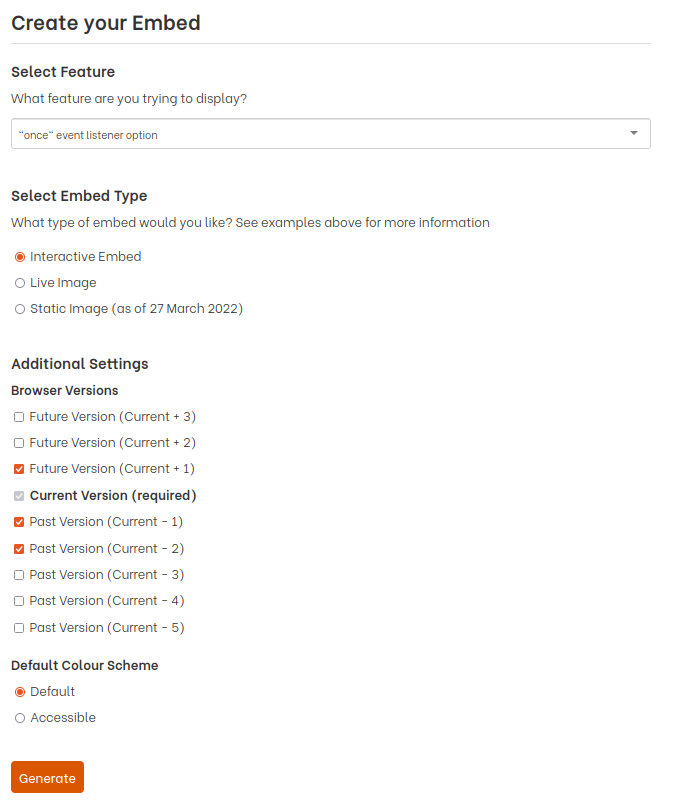As a frontend dev, you probably consult caniuse.com regularly to check on the browser support/compatibility for HTML, CSS, and JavaScript features. If you write about these subjects, browser support is something that you will speak about. Wouldn't it be nice to have a simple way to include this data in your posts too?
A caniuse embed and web app
Ire Aderinokun created a nice embed library and web app for this. It sources data from caniuse.com and mozillas browser compat data (that you see at the end of MDN articles).
If you visit https://caniuse.bitsofco.de/, you can configure the feature you want to embed in your site, as below. It will generate the code snippets you can include in your website.
You can include the data in 3 ways:
-
Interactive embed: You paste the HTML snippet into your post and include the JavaScript file in the page. The script will replace the HTML snippet with a responsive
iframethat contains the most recent data. - Live image: You can use an image that is updated daily by a batch job. Ire provides a HTML snippet with URLs to WebP and PNG images that you can hotlink to.
- Static image: You can get an image that shows the data for that day, and does not change. Again, there is a HTML snippet with URLs to WebP and PNG images that you can hotlink to.
What is good also is that you can choose an accesible color scheme for the interactive embed to make it easier to read for everyone really. 😄 The default colour scheme is not the best IMO. The live image and static images do not support the accessible color scheme unfortunately as Ire would end up needing to generate and host a lot more images.
Personally, I stay away from using the live images. I always feel a bit funny about hotlinking images. I am probably just self-programmed to think this way!
Hotlinking is an internet term. It means displaying an image on a website by linking to the website hosting the image.
Generally, it is something you should avoid doing because it is likely to be copyright infringement and you are using the bandwidth of someone's server that they are paying for. In this case, you have permission. So, no worries!
Still, I prefer to host my own images. It reduces the possibility of external issues. For this reason, if I want to use the generated static images, I download the image files and store them with the rest of my site's images.
Don't feel obliged to follow me on this. It is just good to hear someone else's take, I think!
You can see an example of using a static image for the loading attribute in my last post on native lazy-loading videos.
This is the GitHub repo if you want to check out the code.




Top comments (4)
Wow... brilliant. Especially the static version which wont degrade performance. Thank you so much, most definietly adding to my toolbox.
I only wish the resolution was higher, on my retina screen it looks blocky :)
🙂 Glad you find it helpful Pawel. It is a good idea to keep a list of tools you use like you are doing, I do the same as I find myself forgetting. I noticed you have remove.bg/ on your list, I needed to do this recently and found that it makes you create an account and requires you to buy credits after using it once, this one has none of that: pixlr.com/remove-background/
Pretty nice. I got some issues with blue building on sky bg, but i guess cutting out people is the main target of such tools. Adding to the list :)
Thank you :)